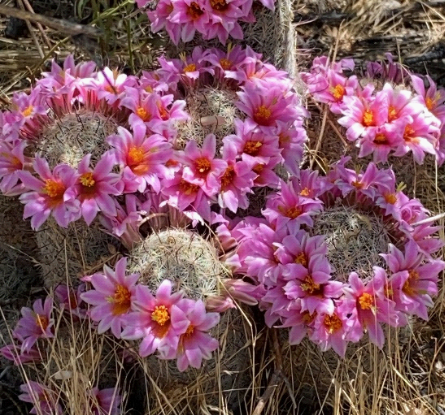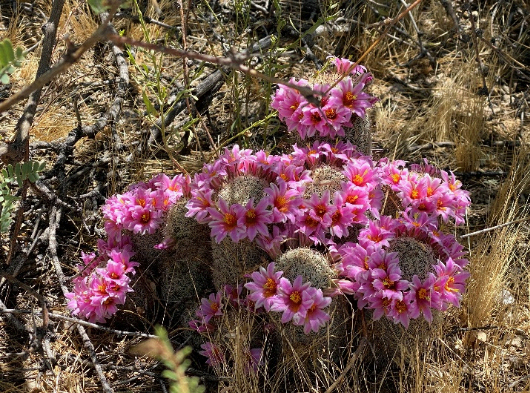In the heat of the Sonoran Desert, many cacti use the shade of trees to help them survive. They also help in the cold winters. These are nurse trees.
Underneath a mesquite in my yard, I found this thriving Graham’s Nipple or Arizona Fishhook Cactus. The scientific name is Mammillaria grahamii. I wouldn’t have noticed it if not for the bright colors of the flowers. The term fishhook refers to the one-three large spines in each spine grouping that are hooked and reddish to brown in color. This species are named after Colonel James Duncan Graham (1799-1851), who took part in a U.S.-Mexico border survey.

Indigenous people have eaten the fruit and pulp of this plant as food, as well using it as a medicine to treat earaches. I’m enjoying it for its natural beauty.
Even though I didn’t include this species in my fun science book that comes with a glossary of Sonoran Desert plants and animals, you can read about other desert treasures and have a good laugh in How NOT to Photograph a Hummingbird.

A Humorous Tale Introducing the Plants and Animals of the Sonoran Desert
For All Ages
Reading Level Age 8+
26 pages
Glossary of Minerals, Flora and Fauna
Illustrated by Anderson Atlas
A bumbling visitor to Southern Arizona is repeatedly injured when trying to photograph a mischievous hummingbird, as the Sonoran Desert conspires against him. Have a laugh while enjoying learning about the plants and animals of Southern Arizona.

